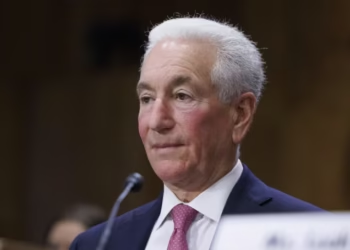Morocco is preparing for a comprehensive reassessment of its trade agreement with Turkey, originally signed in 2004, in the wake of a significant and growing trade imbalance.
The country’s deficit with Turkey has increased to an estimated $3 billion, fueled largely by a spike in textile imports, particularly Turkish fabrics, raising alarm within Morocco’s industrial sector.
This imbalance forms part of a broader trend. In the first four months of 2025, Morocco’s overall trade deficit increased by 22.8%, reaching $12 billion. The previous year closed with a record shortfall of 306 billion dirhams, highlighting the structural nature of the problem.
In a bid to address the issue, Moroccan Trade Minister Omar Hjira is set to travel to Ankara to initiate high-level negotiations focused on rebalancing the relationship between the two countries. Discussions are expected to explore increased Turkish investment within Morocco as a possible path toward easing the trade tension.

Moroccan manufacturers have pointed to several factors giving Turkish goods an edge in the local market. Chief among them are lower production costs, consistent quality, and efficient delivery times, all supported by Turkish government subsidies that keep prices competitive. These advantages have led to an influx of Turkish products, putting pressure on Moroccan industries, especially in the textile sector.
In response, Moroccan authorities have previously imposed emergency tariffs on Turkish textiles, reaching up to 90% in some cases. There has also been the formulation of a “negative list” containing over 1,200 products considered sensitive to Moroccan industry, including a significant number of textile items. This list, modelled on similar protective measures employed by countries like Malaysia, aims to shield key domestic sectors from overwhelming foreign competition.
However, experts warn that short-term protectionist tools are not enough. Many believe that long-term economic stability will require Morocco to boost the competitiveness of its local production, diversify its export base, and critically examine its various free trade agreements.
Structural Deficits Strain Key Partnerships
Trade with Turkey is not the only source of concern—structural imbalances persist across other relationships as well. The European Union remains Morocco’s most important trading partner, with Spain emerging as the leading contributor.
In 2025, Spain accounted for nearly 37% of Moroccan imports, outpacing other major players like France, Germany, and Italy. Bilateral trade between Morocco and Spain has surpassed €22.7 billion, with Spanish exports alone amounting to €12.86 billion. Imports from Morocco stood at €9.83 billion, reflecting the strength and depth of this partnership.
France continues to wield significant economic influence, maintaining more than 60% of total foreign direct investment in Morocco and playing a central role in both import and export markets.
Morocco’s economic ties with the EU have been bolstered by a trade agreement initiated in 2000, which reduced tariffs on industrial goods and has contributed to the rise of Morocco’s manufacturing exports. The country’s major exports include fertilizers, agricultural goods, vehicles, and electrical components. On the import side, energy, machinery, and cereals dominate.
Analysts project that Morocco’s current account deficit will widen to 2.0% of GDP by the end of 2025, driven largely by rising global energy prices. Nonetheless, key sectors such as phosphate production, tourism, and telecommunications continue to demonstrate resilience.
As the world’s top phosphate exporter and a rising hub for tech investment, Morocco’s long-term growth strategy remains focused on expanding export capacity while attracting new sources of foreign capital.
READ ALSO: GAAS, GCAG Demand Immediate Revocation of LI 2462



















